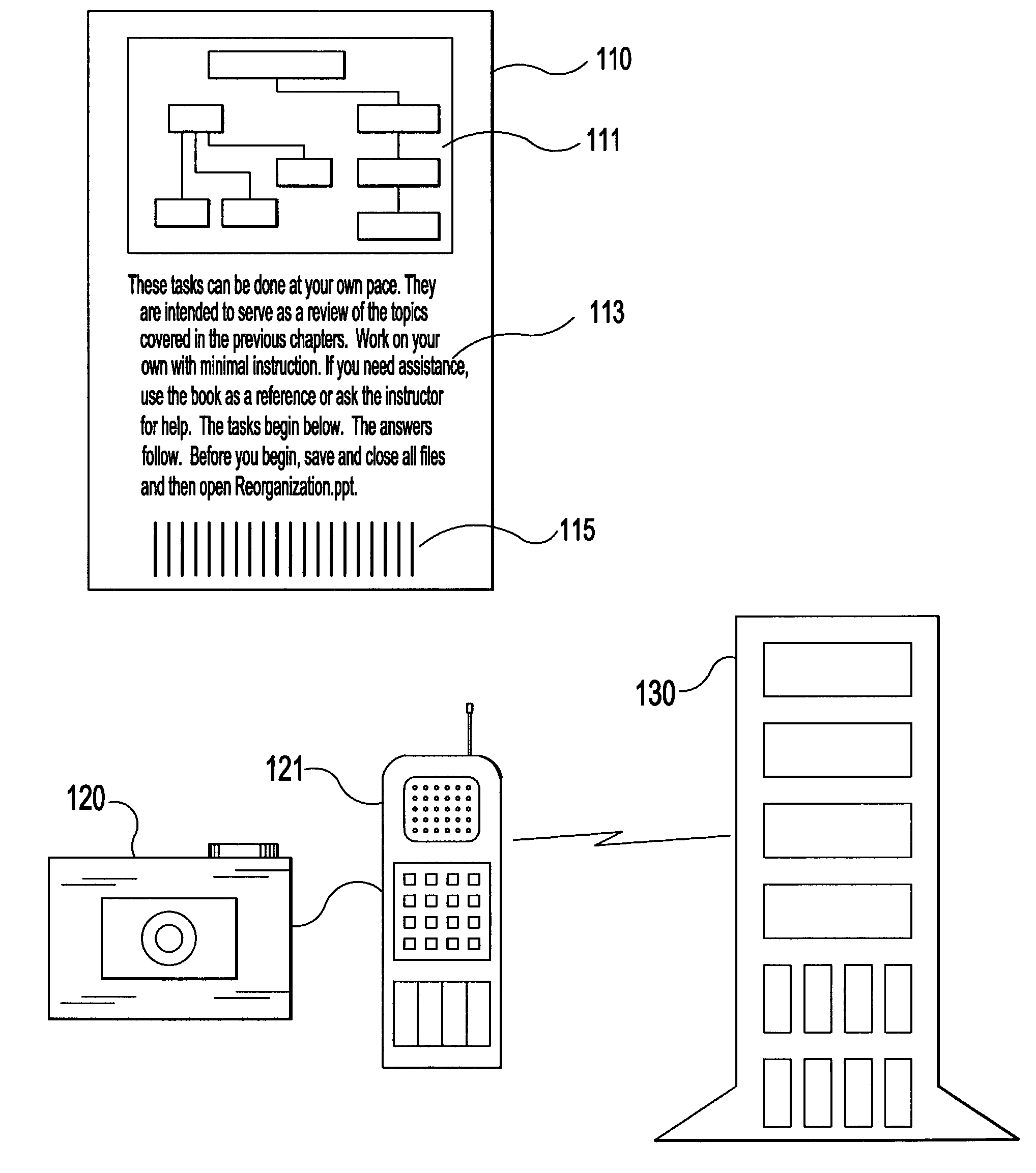System and method for selective processing of digital images
- Summary
- Abstract
- Description
- Claims
- Application Information
AI Technical Summary
Benefits of technology
Problems solved by technology
Method used
Image
Examples
Embodiment Construction
[0031]FIG. 1 is a topological view of the processing environment for the present invention. An image 110, is available for capture through a digital camera 120 attached to, or incorporated into (not shown), a cellular phone 121 or other digital communication device (e.g., a PDA). Image information extracted from image 110 is communicated to server 130 from cellular phone 121 or other digital communication device. While the connection is shown in the figure as a direct connection, it may also be established through a network, through the Internet, through an ISP, etc. The digital camera can additionally be disposed in a cellular telephone or other digital communication device. For the illustrated example, the image 110 comprises a document having three kinds of image information including a graphical image component 111, a text image component 113, and a barcode image component, 115. Digital camera 120 can capture all or a selected part of the image information from the image 110. Un...
PUM
 Login to View More
Login to View More Abstract
Description
Claims
Application Information
 Login to View More
Login to View More - R&D
- Intellectual Property
- Life Sciences
- Materials
- Tech Scout
- Unparalleled Data Quality
- Higher Quality Content
- 60% Fewer Hallucinations
Browse by: Latest US Patents, China's latest patents, Technical Efficacy Thesaurus, Application Domain, Technology Topic, Popular Technical Reports.
© 2025 PatSnap. All rights reserved.Legal|Privacy policy|Modern Slavery Act Transparency Statement|Sitemap|About US| Contact US: help@patsnap.com



